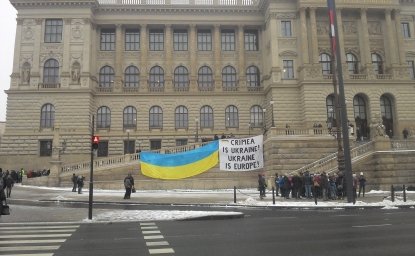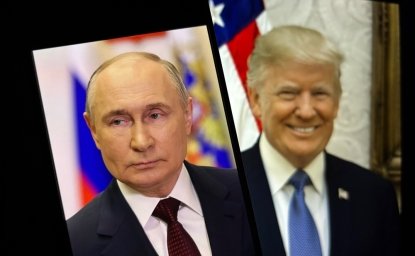The Piratization of Russia: Russian Reform Goes Awry

"In 1991 a small group of Russians emerged from the collapse of the Soviet Union to claim ownership of some of the world's most valuable petroleum, natural gas, and metal deposits. This resulted in one of the world's greatest transfers of wealth," said Marshall Goldman, Davis Professor of Russian Economics (Emeritus), Wellesley College, and Associate Director, Davis Center for Russian and Eurasian Studies, Harvard University at a Kennan Institute lecture on 1 May 2003. "By 1997, five of those individuals were on Forbes magazine's list of the world's richest billionaires–This year, there are 17 on this list." The emergence of this group, commonly referred to as the Russian oligarchs, is part of the story of the Russian post-Soviet economic reforms described in Goldman's new book, The Piratization of Russia: Russian Reform Goes Awry.
The new Russian government quickly embarked on a course of reforms called shock therapy, with the ultimate goal of preventing the return of communism to Russia. The policy, which was fully supported by influential Western advisors, was to immediately free price controls and privatize state-owned enterprises as quickly as possible. According to Goldman, the driving belief was that private ownership of production was by definition more efficient that state ownership; it would be the quickest path to economic growth and would thus build public support. "If they could only convince the public that it was in their material interest to support the privatization process, then it would be more difficult to revert to communism," said Goldman.
Goldman argued that it was a mistake to focus only on the privatization of state sectors. "[The Russians], and particularly the western advisors, neglected the fact that what you were doing was privatizing, except for the small shops, large enterprises that were essentially monopolies. So what happened? You've turned a state monopoly into a private monopoly, but the private monopoly doesn't operate all that much differently." Goldman noted that the small business sector is only 10-30 percent of Russian GDP, compared to 50 percent in the economies in the West.
The small groups of individuals who emerged in control of the privatized enterprises fall into three different groups, according to Goldman. The first is former factory directors that became factory owners. This group outmaneuvered the workers, who were not organized, to gain control of the factories. The next two groups, argued Goldman, were the ones who obtained the greatest wealth–the nomenklatura and non-nomenklatura oligarchs. The nomenklatura oligarchs were the Soviet economic elites who took advantage of their positions to privatize the industries that they regulated. For example, Viktor Chernomyrdin, who oversaw natural gas production during the Soviet era, went on to head up Gazprom, the Russian natural gas monopoly and richest company. When Chernomyrdin went on to become Prime Minister, he passed control on to his deputy who worked under him in the Ministry.
The non-nomenklatura oligarchs were the most successful as a group, stated Goldman. While some worked for the Soviet state, they were far from being members of the elite. Many of them were members of minority groups who were precluded from promising careers under the Soviet system because of their backgrounds. These individuals gained experience in the black market, and had a great advantage in operating in the shortage economy of early post-Soviet Russia, especially in terms of acquiring cash and managing their cash flow with start-up banks. "Look at a list of oligarchs," said Goldman, "and you will see that almost all of them either owned or created a bank." These banks would prove essential to their acquiring assets spread all over the country, particularly in natural resources.
The consequences of shock therapy were severe for Russia. The economy contracted by nearly 50 percent between 1991-97, and experienced hyperinflation in the early 1990s. Social dysfunction followed, with a dramatic rise in poverty, corruption, and capital flight. Goldman argued there was another possible path. He noted that Poland concentrated on encouraging the formation of start-ups and small businesses, rather than the privatization of large state enterprises: "In a very short period of time, the Poles created two million new businesses, whereas in a similar period of time the Russians only created 800,000." When the Poles did privatize their state firms, they turned over one-third of all stock to a group of 15 mutual funds. These mutual funds served as an effective block against asset stripping.
Goldman was guardedly optimistic about Russia's prospects for the future. He noted that there has been consistent economic growth since 1999, Russian President Vladimir Putin has enacted a number of important economic reforms, and some of the oligarchs are building their businesses rather than only exporting capital. Still, Goldman cautioned, Russia relies too heavily on natural resources and needs to build up its value-added sectors.
Author


Kennan Institute
After more than 50 years as a vital part of the Wilson Center legacy, the Kennan Institute has become an independent think tank. You can find the current website for the Kennan Institute at kennaninstitute.org. Please look for future announcements about partnership activities between the Wilson Center and the Kennan Institute at Wilson Center Press Room. The Kennan Institute is the premier US center for advanced research on Eurasia and the oldest and largest regional program at the Woodrow Wilson International Center for Scholars. The Kennan Institute is committed to improving American understanding of Russia, Ukraine, Central Asia, the South Caucasus, and the surrounding region through research and exchange. Read more

Explore More
Browse Insights & Analysis
The OSCE is a Good Value for America

Infographic | Russia's Illegal Annexation of Crimea

Russia’s Indigenous Communities and the War in Ukraine
